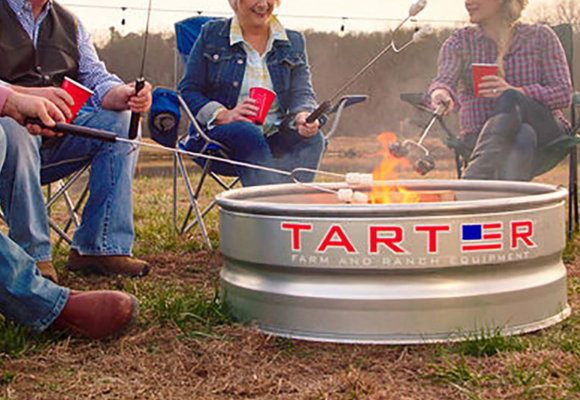When it comes to working with galvanized metal, a common question arises: Can you safely burn off the galvanized coating? This coating, typically made of zinc, is applied to steel or iron to prevent rusting. However, certain projects may require the removal of this protective layer. In this article, we will explore the safety considerations, environmental impacts, and effective methods for removing galvanized coatings. Our focus will be on understanding the chemical reactions involved in the process and providing practical advice for those needing to perform this task. Whether you’re a professional in the field or a DIY enthusiast, understanding the complexities of working with galvanized metal is crucial for ensuring both personal safety and the integrity of your project.
Understanding Galvanized Coating:
Before diving into the process of burning off the coating, it’s essential to understand what galvanization is. This process involves applying a protective zinc coating to steel or iron to prevent rusting. The longevity and durability it provides to metal products are commendable, making it a popular choice in various industries.
The Necessity of Removing Galvanized Coating:
There are instances where the removal of this coating is necessary. Whether it’s for welding purposes, repainting, or restoration projects, understanding the right way to remove galvanized coating is crucial. The focus is on achieving your goal while maintaining the integrity of the metal and ensuring personal safety.

Can You Burn Off Galvanized Coating?
The short answer is yes, but it requires caution and understanding. Burning off galvanized coating is a process that involves high temperatures to remove the zinc layer. This method is often quick and effective but comes with necessary precautions due to the release of zinc oxide fumes.
Safety First:
The paramount concern in this process is safety. Zinc oxide fumes released during burning can be harmful if inhaled. It’s essential to perform this task in a well-ventilated area, preferably outdoors. Wearing personal protective equipment (PPE), like respirators, gloves, and safety goggles, is non-negotiable to ensure your safety.
Environmental Considerations:
Equally important is the consideration for the environment. Burning galvanized metal should be done responsibly to minimize the impact on the environment. Adhering to local environmental regulations and guidelines is a must to ensure a sustainable approach to this process.
The Burning Process:
The process involves using a heat source, like a torch, to heat the galvanized metal until the zinc coating begins to peel off. It requires a steady hand and an eye for detail to ensure even removal and to avoid damaging the underlying metal.
Aftercare and Finishing:
Once the coating is removed, the metal can be treated or finished according to the requirements of your project. This could include painting, welding, or applying a different type of coating. The versatility that comes after removing the galvanized layer opens up a plethora of creative possibilities.
Advantages of Burning Off Galvanized Coating:
- Efficiency: This method is faster compared to chemical removal processes.
- Precision: It allows for targeted removal, especially useful in welding.
- Flexibility: Post-removal, the metal can be treated in various ways to suit your project needs.
Professional Assistance:
While this can be a DIY project, seeking professional assistance is advisable, especially for larger or more complex tasks. Professionals have the right tools and expertise, ensuring the job is done efficiently and safely.
How Galvanized Metal Plus High Temperatures Can Cause Metal Fume Fever:
When galvanized metal is exposed to high temperatures, such as during the process of burning off the coating, it releases zinc oxide fumes. These fumes can lead to a condition known as metal fume fever, a flu-like illness that’s temporary but uncomfortable. Symptoms typically include fever, chills, nausea, headache, fatigue, muscle aches, and joint pains. These symptoms usually appear several hours after exposure and can last for up to 48 hours.
Understanding the risks associated with metal fume fever is crucial for anyone involved in burning off galvanized coating. It’s not just about the immediate discomfort; prolonged exposure to zinc oxide fumes can have more severe health implications. Therefore, it’s essential to use protective measures like proper ventilation, respirators, and adhering to safety guidelines to minimize the risk of metal fume fever.
Study Evaluates the Safety of Galvanized Fire Pits:
In recent years, there has been an increased interest in the safety of galvanized fire pits. A study aimed at evaluating the risks associated with using galvanized metal in high-temperature environments like fire pits offers valuable insights. The primary concern is the release of toxic fumes when the zinc coating vaporizes at high temperatures.
The study found that while galvanized fire pits can be safe under certain conditions, the risk of zinc oxide fume emission is real. It emphasized the importance of ensuring the fire pit is adequately ventilated and not used in enclosed spaces. The study also recommended avoiding placing food directly on the surface of a galvanized fire pit to prevent ingestion of zinc residues.
These findings underscore the importance of awareness and caution when dealing with galvanized metals in high-temperature situations. Whether it’s for a DIY project or recreational use, understanding the implications on health and safety is paramount. This knowledge not only ensures personal well-being but also contributes to a more informed and responsible approach to working with and enjoying galvanized metal products.
What Temperature Does Galvanizing Burn Off:
A critical aspect of safely burning off galvanized coating is understanding the temperature at which galvanizing burns off. Galvanized metal is coated with zinc, and the key to effectively removing this coating is to know the temperature at which zinc oxidizes and vaporizes.
The melting point of zinc is around 787°F (420°C), but to actually vaporize zinc and burn off the galvanizing, temperatures need to be significantly higher. Zinc begins to vaporize at approximately 1665°F (907°C). It’s at this point that the galvanizing coating starts to break down and can be removed from the underlying metal.
However, reaching these temperatures requires careful control. Excessive heat can not only release harmful zinc oxide fumes but also compromise the integrity of the metal underneath. This is particularly important in applications where the strength and structure of the metal are crucial, such as in construction or manufacturing.
Understanding these temperature thresholds is essential for anyone looking to burn off galvanized coating. It helps in setting up the right conditions for the task, ensuring safety, and preserving the quality of the metal. When using a heat source like a torch, it’s important to monitor the temperature closely and work in a controlled manner to achieve efficient and safe removal of the galvanized coating.
Conclusion:
Burning off galvanized coating is a viable option in the world of metalwork, provided it’s done with the utmost care and responsibility. It’s a process that opens the door to versatility in metal usage, ensuring you can tailor the material to your specific project needs. With the right precautions and respect for safety and environmental guidelines, you can successfully navigate this task, leading to a successful and satisfying outcome in your metalworking endeavors.

